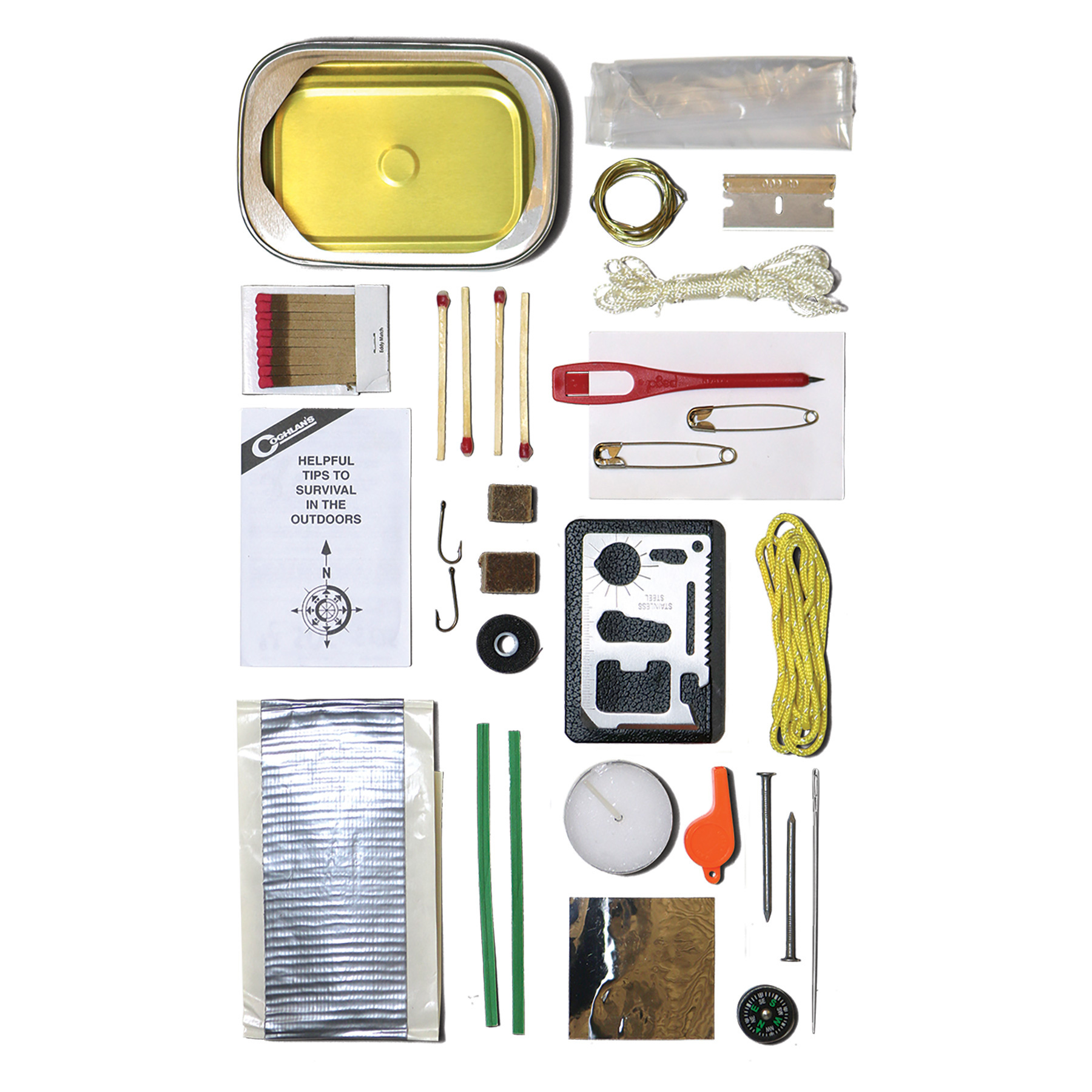A survival kit is a collection of items that are essential for survival in an emergency situation. Survival kits can be pre-made or assembled by individuals. When preparing a survival kit, consider the following items:

1. Food and Water:

- Non-perishable food items with high caloric and nutritional values like energy bars, canned food, and dehydrated meals.
- Water purification tablets or a water filter to cleanse contaminated water sources.
2. First Aid Supplies:

- Bandages, gauze pads, antiseptic wipes, pain relievers, and medical tape.
- Anti-diarrhea and antihistamine medications, if applicable.
3. Clothing and Shelter:
- Warm clothes, a raincoat or poncho, sturdy footwear, and a hat.
- A tarp or tent for shelter, a sleeping bag or blanket for warmth.
4. Navigation and Signaling:
- A map of the area and a compass for navigation.
- A whistle or signaling device for attracting attention.
- A flashlight with extra batteries and a small mirror for signaling.
5. Tools and Repair Kit:
- A multi-tool or Swiss Army knife for various tasks.
- A sturdy knife for cutting and preparing food and making shelter.
- Fire starter kit (matches, lighter, flint, tinder) for cooking and warmth.
6. Communication and Emergency Information:
- A mobile phone with a power bank or solar charger for communication.
- A notebook and pen for note-taking and communication, if necessary.
- Emergency contact information and a list of important phone numbers.
7. Sanitation and Hygiene:
- Hand sanitizer or antibacterial wipes for personal hygiene.
- Toilet paper or sanitation bags for proper waste disposal.
- Feminine hygiene products if necessary.
8. Other Essential Items:
- Sunglasses or protective eyewear for eye protection from sun and debris.
- A cord or rope for various purposes like shelter construction or tying gear.
- A compact mirror for signaling or self-inspection.
9. Consider Your Specific Needs:
- Tailor the kit based on your personal needs, health conditions, and the environment you may encounter.
- If you have allergies or dietary restrictions, include suitable items in your kit.
- If you are in a group, distribute items among members to ensure everyone has crucial supplies.
10. Organize and Pack Smart:
- Organize and pack items in a compact, waterproof container.
- Use vacuum-sealed bags or airtight containers for food and other supplies to maintain freshness and protect them from moisture.
Review your survival kit periodically, replace expired items, and keep an inventory of contents for easy reference. Personalize your kit based on your unique circumstances, and always be prepared for emergencies by carrying or having access to your survival kit.









